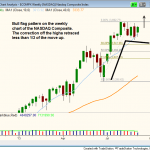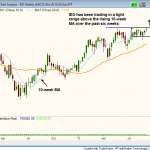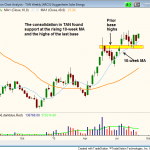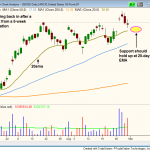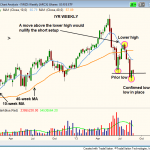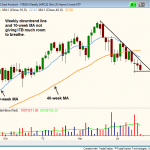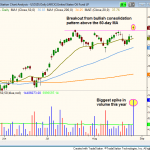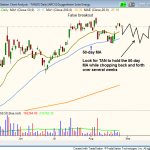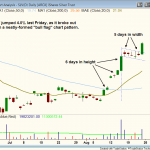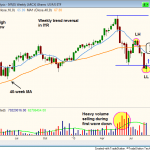Taking a look at the weekly chart, we see the NASDAQ forming a bull flag pattern. The run up off the lows in July created the flag pole, and the current sideways action is forming the flag. The tight consolidation has retraced less than 1/3 of the last wave up, which is what we like to see on bull flag patterns (should not retrace more than 33% to 38% of last move up). The pole was created in six weeks, so the breakout from the flag should go in 5-7 weeks (we are currently on week 5).
